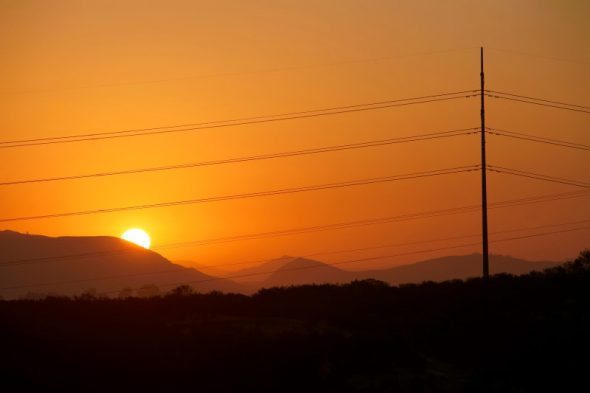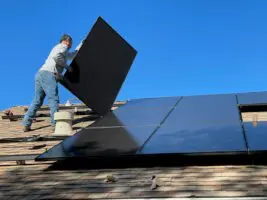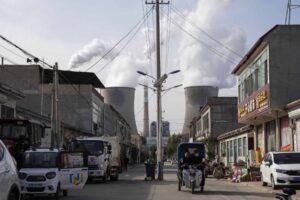It is becoming increasingly difficult to keep track of climate-related crises this year – and that’s before we even take global pandemics into account. To refresh your memory, a couple of weeks ago, a series of rolling blackouts were imposed on Californians by their local grid operator, in the midst of an unprecedented heatwave – so intense that several records were broken.
The reaction to the blackouts has been relatively predictable. Conservatives, climate deniers and renewable skeptics jumped on board – just as they did in 2016, after South Australia’s blackout – to blame the state’s transition from dirty to clean for the darkness, as I discussed previously on RenewEconomy.
Having followed the debate for a few weeks now, the language of criticism – both mild and extreme – have followed one clear assumption: California’s foray into solar power is some sort of unique, world-leading adventure into solar power deployment. “California is about five years ahead of Australia in the rush to replace reliable and manageable coal, gas and nuclear electricity with nature-dependent electricity”, wrote former Institute of Public Affairs spokesperson Alan Moran, recently.
Two things immediately sprang into my head as key questions. First, I wondered exactly how far ahead California was, if it was at all. Australia has seen incredible growth in solar, but precisely zero rolling blackouts received in the same way. Second, I wondered what the long term impact on the grid there has been of the undeniable growth in solar, in the state. Both questions have complex, interesting and surprising answers.
Is California light-years ahead of the world in solar roll-out?
If we compare the long-term proportion of electrical power sourced from both rooftop and utility-scale solar in the state of California and Australia’s National Electricity Market, it’s immediately clear that though California is slightly ahead, there isn’t a huge amount of space between the two lines. Solar has certainly over-taken wind power as the primary area of growth for renewables in Australia (while California’s wind power industry has lagged) – here’s a reminder of what we saw in my previous post:
In fact, the comparison becomes clearer as you drill further down into the data. I pulled two recent days from OpenNEM’s database, and compared them to data made available on California ISO’s website here. On these two illustrative days, solar peaked at high levels for both the NEM – an islanded grid that cannot call on exports or imports – and California, which is interconnected into several neighbouring states.
 If the problem here is the mere presence of solar power, why isn’t Australia suffering constant rolling blackouts, as grids collapse and fizzle under the pressure of solar power? Even among various states in the US, California is a leader, but is certainly not alone in seeing large proportions of total generation supplied by utility scale and rooftop solar, as shown in the EIA’s data, comparing California to Nevada:
If the problem here is the mere presence of solar power, why isn’t Australia suffering constant rolling blackouts, as grids collapse and fizzle under the pressure of solar power? Even among various states in the US, California is a leader, but is certainly not alone in seeing large proportions of total generation supplied by utility scale and rooftop solar, as shown in the EIA’s data, comparing California to Nevada:
Of course, the real story is far more complicated than the simple narratives put forward by critics looking to seize a cheap, ugly political point. Broader issues with grid management, along with a strange distaste for demand response options in favour of very large but slower-to-build battery installations has resulted in failures to provide capacity where it is needed. Greater or similar levels of solar are being deployed in the US and in other countries like Australia, and good management is resulting in a far prettier picture.
The reliability question
Finally – what about long-term reliability metrics in California? Just like Australia’s ‘unserved energy’ (the subject of recent tightening), the ‘North American Electric Reliability Corporation’ (NERC) sets reliability standards. If you want to, you can read all 2,249 pages of them, updated only a few weeks ago.
To simplify the metrics, the first, CPS1 (control performance standard) formulates a percentage that shows how well the match between supply and demand is maintained – the ultimate goal of grid operator. Being at or below 100% is bad. The second, RBC (reliability based control), sets lower and upper bounds for how long a grid can exceed set limitations of this mismatch, and counts the number of times breaches occur, by consecutive duration. The greater the number of these, the worse the reliability.
The first, CPS1, has remained at a steady 100% or greater, as solar in California has grown:
 The second standard, RBC, is another way of viewing a similar story: how often is a particular region seeing a bad and dangerous imbalance between supply and demand, such that it impacts the frequency of the grid and causes problems with equipment and triggers shutdowns? The count of these breaches, shown against the growth of solar, again demonstrates that there is far more to the story of grid reliability than the mere presence or prominence of one technology:
The second standard, RBC, is another way of viewing a similar story: how often is a particular region seeing a bad and dangerous imbalance between supply and demand, such that it impacts the frequency of the grid and causes problems with equipment and triggers shutdowns? The count of these breaches, shown against the growth of solar, again demonstrates that there is far more to the story of grid reliability than the mere presence or prominence of one technology:
 There was never any doubt that replacing an old, dangerous technology with a new, safe one would be complex, and require plenty of engineering and planning effort. There was never any doubt that the process of integrating renewable energy would not be perfect everywhere in the world. But problems that arise are exaggerated in their impact, they are presented as unresolvable, and they are boiled down to a simple, dramatic and basic causal linkage – more renewables equals more blackouts (no matter how ludicrous that claim).
There was never any doubt that replacing an old, dangerous technology with a new, safe one would be complex, and require plenty of engineering and planning effort. There was never any doubt that the process of integrating renewable energy would not be perfect everywhere in the world. But problems that arise are exaggerated in their impact, they are presented as unresolvable, and they are boiled down to a simple, dramatic and basic causal linkage – more renewables equals more blackouts (no matter how ludicrous that claim).
California, like South Australia, will take action on the gremlins, even in the face of a maelstrom of over-simplification and criticism that goes up to the President – just as South Australia’s politicisation went up to the PM, back in 2016.












